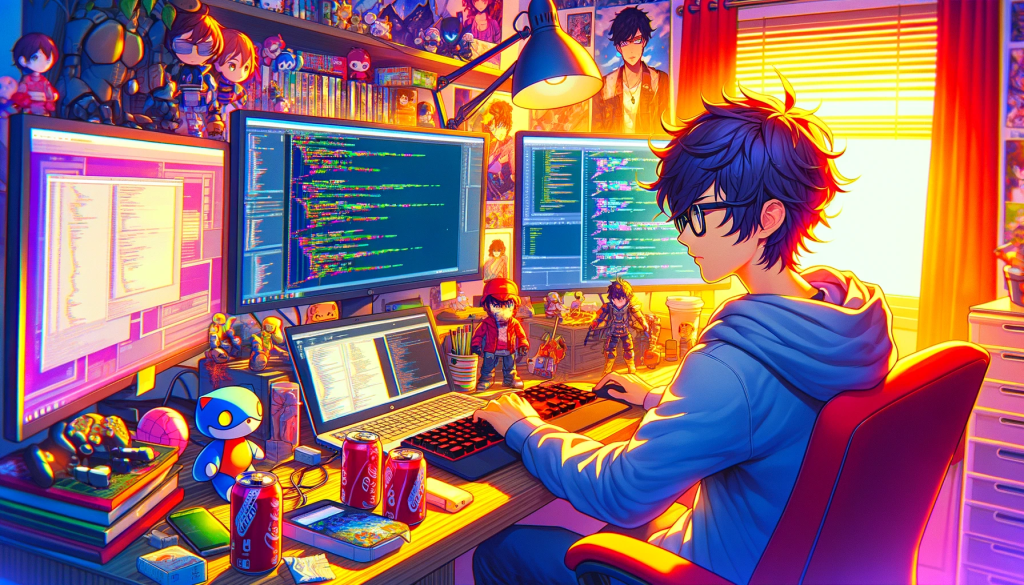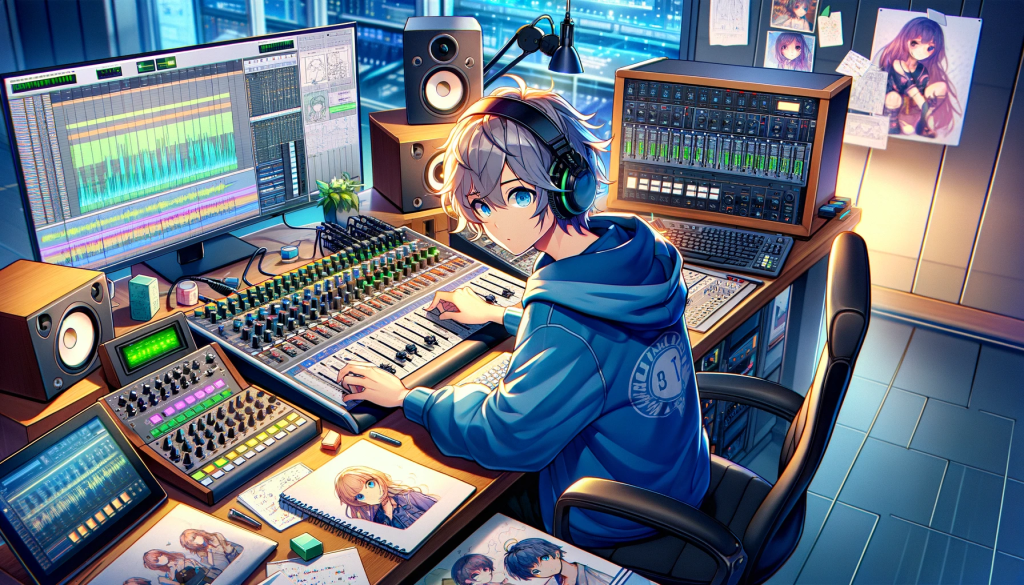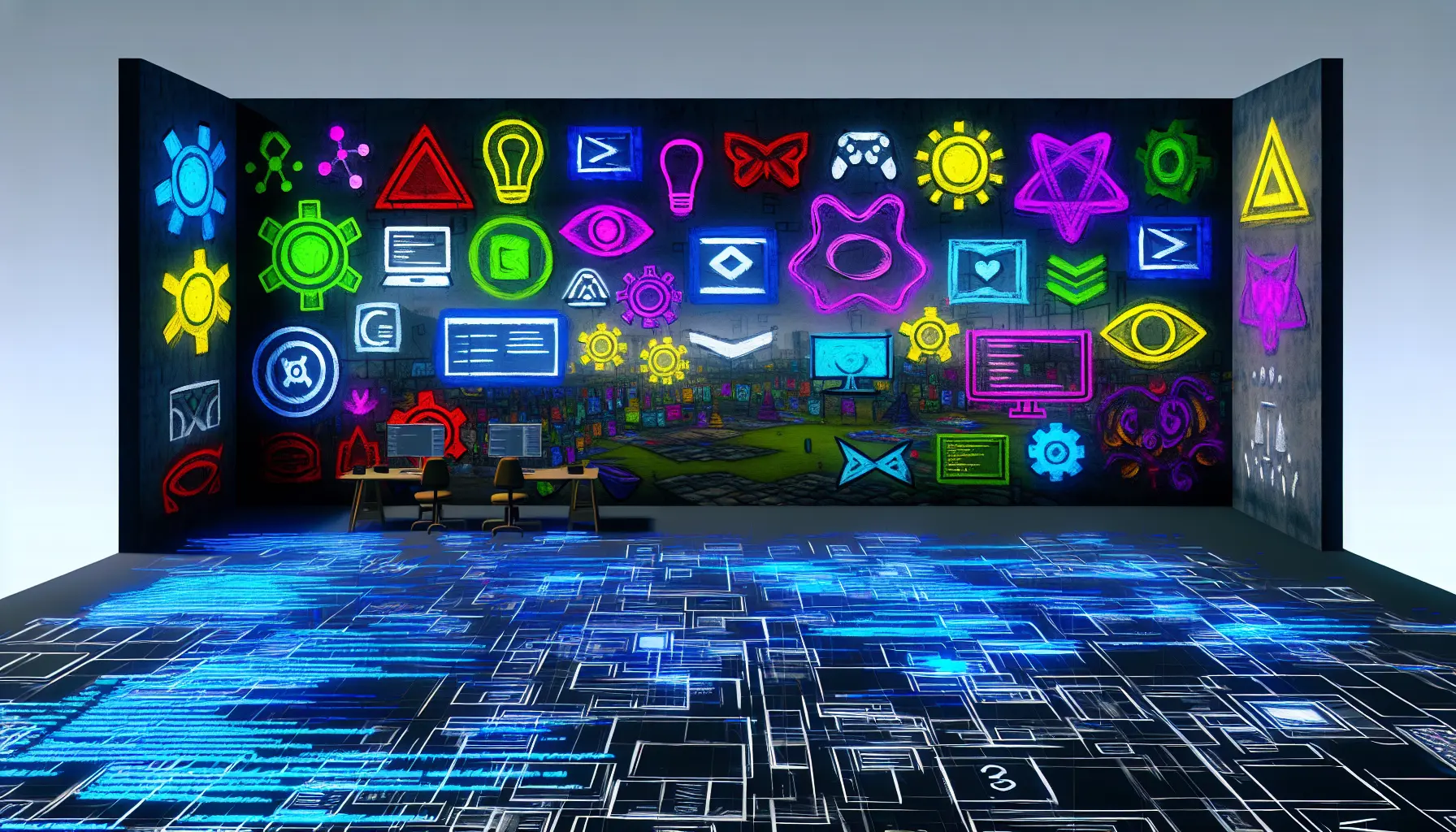Based on the provided outline, it seems you’d like to create an article about game development technologies and the various aspects involved in creating games. In the article, you’ll cover a wide range of topics from the significance of technology in game creation to the future of casual and hyper-casual gaming. The outline is comprehensive and covers the important aspects of game development technologies and related areas. I can continue to work on more sections following this outline
Core Technologies in Game Development
Creating a compelling and immersive game experience requires a variety of core technologies. These key elements serve as the building blocks for game creation, shaping the interactive experiences offered to players.
Game Engines: The Powerhouses Behind Game Creation
Game engines form the core of game development, providing the necessary tools and features to create interactive experiences. They offer functionalities such as rendering graphics, physics simulations, sound management, and more, often in combination with a scripting language for customization.
Programming Languages Popular in Game Development
Game development commonly involves languages such as C++, C#, and JavaScript. Each language offers unique benefits, with C++ providing high performance and direct memory access, C# offering ease of use and integration with Unity, and JavaScript being used for web-based and casual gaming.
Middleware: Enhancing Game Functionality
Middleware refers to software solutions that extend the capabilities of game engines, offering features such as physics simulations, AI behavior, network management, audio processing, and more. By integrating middleware, developers can streamline the implementation of complex functionalities in their games.
These core technologies provide the essential foundation for game development and play a crucial role in shaping the overall gaming experience.

Graphics and Visual Effects in Games
In the world of gaming, captivating visual elements and stunning effects play a vital role in creating an immersive and engaging experience for players.
Real-Time Rendering Techniques
Real-time rendering is the process of generating images from 3D models on the fly, allowing for dynamic and interactive visuals as the game world unfolds. Techniques such as ray tracing, global illumination, and shader effects contribute to rendering realistic and visually impressive scenes in games.
Graphics APIs: DirectX, Vulkan, and OpenGL
Graphics APIs, including DirectX, Vulkan, and OpenGL, serve as interfaces between the game and the graphics processing unit (GPU). They provide a bridge for developers to access the GPU’s hardware acceleration for rendering graphics, ensuring efficient and optimized performance.
The Art of Visual Storytelling Through Game Design
Visual storytelling in games involves using visual elements to convey narratives, emotions, and atmosphere. Through environments, character designs, and animations, game designers craft a visual language that immerses players in the game world and enhances the storytelling experience.
Physical-Based Rendering and its Impact on Realism
Physically-based rendering (PBR) is a technique that simulates the interaction of light with surfaces in a realistic manner, resulting in visually authentic materials and lighting in games. PBR contributes to enhanced realism, making game environments and characters more lifelike and immersive for players

Dynamic Audio and Sound Design
Dynamic audio is a crucial aspect of game immersion as it provides an interactive and responsive auditory experience. Sound design techniques, including ambient sounds, character voiceovers, and special effects, contribute to the atmospheric and interactive aspects of games, enhancing the player experience.
Middleware for Audio Implementation
Middleware refers to pre-built software components that streamline the implementation of certain functionalities. In game development, audio middleware tools provide a variety of features for integrating and managing audio assets, including real-time audio rendering, mixing, and spatial audio effects.
Music’s Role in Player Immersion
Music in games plays a vital role in setting the tone, conveying emotions, and directing the player’s experience. Whether through adaptive music systems that respond to in-game events or carefully composed soundtracks, music has the power to deeply immerse players in the game universe

Game Physics Engines: Bringing Virtual Worlds to Life
Physics engines enable the realistic simulation of physical phenomena in games, such as gravity, collisions, and object interactions, contributing to the immersive experience of virtual worlds.
Artificial Intelligence for Non-Player Character Behavior
Artificial intelligence (AI) algorithms are utilized to create lifelike and adaptive behaviors for non-player characters (NPCs) in games. This involves designing AI systems that enable NPCs to react intelligently to game events and player interactions, enhancing the game’s realism.
Simulation Technologies for Realistic Environments
Simulation technologies are used to create lifelike environments and world dynamics, providing the foundation for realistic settings and interactions within games. These technologies encompass various aspects such as weather effects, destructible environments, and dynamic ecosystems, adding depth and immersion to the gaming experience
Design Principles for Game UI/UX
Implementing intuitive and visually appealing user interface (UI) and user experience (UX) design is crucial for engaging players. This involves considering factors such as usability, interactivity, and the seamless integration of game elements with storytelling and gameplay.
Tools and Libraries for Interface Design
Game developers utilize specialized tools and libraries to design and implement UI/UX components, including UI editors, asset creation software, and prototyping tools that streamline the development process and enhance the overall user experience.

Playtesting and User Feedback
The iterative process of playtesting involves observing real users interacting with the game to identify areas for improvement in UI/UX design. Incorporating user feedback obtained during playtesting sessions enables developers to refine and optimize the game’s interface design for a more instinctive and engaging user experience
Development of Multiplayer Game Elements
The implementation of multiplayer functionalities in games requires the utilization of networking protocols and technologies to enable real-time interactions between players. Game developers leverage networking libraries and frameworks to manage player connections, synchronize game states, and facilitate dynamic interactions within virtual environments.
Matchmaking Algorithms and Server Technologies
Incorporating robust matchmaking algorithms and server solutions enhances the multiplayer gameplay experience by ensuring balanced and fair player-to-player matchups, as well as providing stable and reliable network infrastructures to support seamless multiplayer interactions.
Integrating Social Mechanics
Integrating social mechanics, such as friend lists, social sharing functionalities, and community features, fosters player engagement, social interaction, and community-building within the game environment. These social elements contribute to long-term player retention and a sense of community among game enthusiasts
Strategies for Multi-platform Game Releases
Developers need to consider different strategies to ensure that their games can be released across multiple platforms, including desktop, console, and mobile. This may involve choosing compatible development frameworks, ensuring optimization for specific hardware requirements, and adapting user interfaces for diverse input methods.
Challenges and Tools for Porting Games
Porting games across platforms presents technical challenges such as addressing differences in hardware capabilities, optimizing performance for various devices, and adapting control mechanics to different input methods. Utilizing game development tools that support multiplatform deployment can streamline the porting process.
Cloud Gaming and the Future of Game Distribution
The advent of cloud gaming presents new opportunities for game distribution, allowing users to access games through high-speed internet connections without the need for dedicated gaming hardware. Game developers should consider the implications of cloud gaming on their distribution strategies and technology choices
Technologies Powering Mobile Game Development
With the growth of the mobile gaming market, developers need to leverage relevant technologies for effective mobile game development. This involves using mobile-specific game engines, understanding the limitations and capabilities of mobile devices, and optimizing games for a diverse range of screen sizes and input methods.
Developing for AR/VR Platforms
The rise of augmented reality (AR) and virtual reality (VR) presents new opportunities for game developers. Understanding the specific requirements and unique features of AR and VR platforms is crucial for creating immersive and engaging experiences for users.

The Future of Casual and Hyper-Casual Gaming
Casual and hyper-casual games continue to dominate the mobile gaming market. Game developers should stay updated on the latest trends and technologies shaping the future of casual and hyper-casual gaming, including innovative game mechanics and monetization strategies tailored to these game genres
Overview of Monetization Models in Gaming
Understanding the various monetization models available in the gaming industry is essential for developers to sustain their projects and generate revenue. This section covers the common models such as premium, freemium, subscription, and free-to-play, along with their respective advantages and drawbacks.
In-App Purchases and Ad Integration
In-app purchases and ad integration have become integral parts of modern game development. This section delves into the strategies for seamlessly integrating in-app purchases and advertisements while maintaining a positive user experience and maximizing profitability.
Crowdfunding and Early Access Releases
Crowdfunding and early access releases provide alternative monetization strategies for independent developers. This section explores the processes and best practices for using crowdfunding platforms and offering early access releases to fund and develop games, as well as the associated benefits and risks
Continuous Learning and Skill Development
With the rapid evolution of technology, continuous learning is crucial for game developers to stay current. This section discusses the importance of staying updated with the latest industry trends, tools, and best practices, and outlines strategies for continuous professional development.
The Role of Game Jams and Prototyping
Game jams and prototyping serve as platforms for developers to experiment with new ideas, refine their skills, and collaborate with peers. This section explores the significance of participating in game jams and leveraging prototyping as tools for innovation and skill enhancement.
Participation in Game Developer Communities
Engaging with game developer communities provides invaluable opportunities for networking, knowledge sharing, and staying informed about emerging trends. This section highlights the benefits of participation in developer communities, forums, and events, and discusses the impact on career growth and skill enrichment
FAQ!
What skills are necessary for a career in game development?
A career in game development requires a combination of technical, artistic, and collaborative skills. Proficiency in programming languages, game design principles, and familiarity with game engines are essential technical skills. Additionally, skills in 3D modeling, animation, storytelling, and sound design contribute to an individual’s artistic capabilities. Moreover, strong communication, problem-solving, and teamwork skills are crucial for thriving in a development environment.
How important is understanding hardware limitations for game development?
Understanding hardware limitations is critical as it directly impacts game performance and user experience. Game developers need to optimize their creations to run smoothly on varying devices, considering factors such as processing power, memory, and graphics capabilities. Adhering to hardware limitations ensures that games can reach a broader audience and deliver a consistent experience across different platforms.
What are the common challenges faced by independent game developers?
Independent game developers often face challenges related to limited resources, funding, and marketing. They may encounter difficulties in securing funding for their projects, lack access to the latest technology, and face obstacles in promoting their games to a wider audience. Additionally, working independently can lead to isolation, and managing various aspects of game development, from coding to design and marketing, can be overwhelming.
How can developers ensure accessibility in games?
Developers can ensure accessibility in games by considering diverse player capabilities and needs. This involves implementing features such as customizable controls, subtitles, colorblind modes, and adjustable difficulty levels. Additionally, conducting usability testing with a diverse group of players can provide valuable insights into how to make games more accessible.
This approach aligns with creating inclusive gaming experiences that cater to a broad audience, including individuals with disabilities. By integrating accessibility features, developers can enhance player engagement and make their games more welcoming and enjoyable for all players
